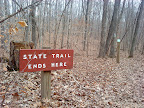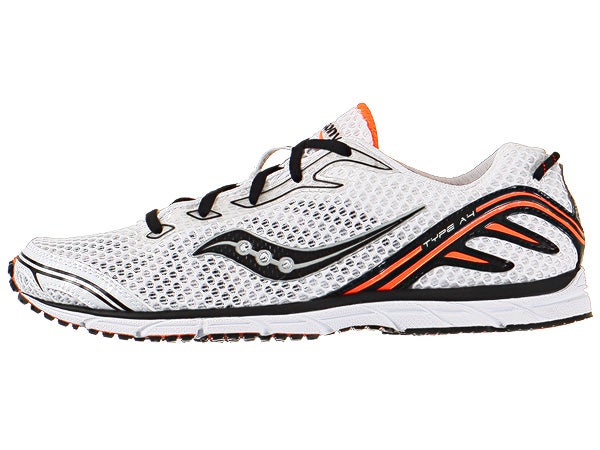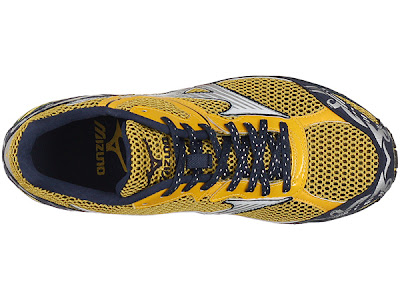This was my first experience running the
Little River Trail Run, now in its sixth year, which took place this past Saturday morning.

Thanks to the volunteers, sponsors, and
Trail Heads who organize this stellar event each year with quite an enthusiastic following. Naturally, I was not disappointed in the slightest!
The popularity of this race is not at all surprising, really. It takes place during a season when there's not much going on in the North Carolina trail racing world. So, a race like the Little River 10-mile and 7K Run is a welcome relief from weeks of
base building and frigid tempo runs.
Thus, when the race reached capacity in early January, I was glad to have registered early. Officially, there were 300 participants in the 10-mile and 153 finishers in the 7K, a record turnout.
pre-race

The conditions on race morning were a frosty 30 degrees with traces of ice and snow remaining after the week's previous ice storm. In fact, I was rather surprised by the amount of frozen stuff still on the trails. Fortunately, the lugs and sticky rubber on my
Inov-8 Roclite 285s made the slick terrain more traversable. At a few points during the race I saw people wearing road shoes skiing down the slopes in front of me. (Of course, it's possible that this was their plan all along. I wasn't able to pass one or two of them.)

I arrived early so that I'd be able to find a parking space. As much as I would have liked to carpool with other runners for the sake of being green, my lack of social
skills connections and geographical starting point made sharing a ride impossible.
So, with an hour to spare before starting time, I obtained my nifty race shirt and bib and watched other people warm up for a while. A trip to the porta-john was in order, too, of course.
The starting line was actually set back towards the park entrance on the paved road. So, I used the distance from the parking lot to the starting line for my warm-up jog, after which time I settled into the middle of the pack as we all lined up to wait for the signal.
My strategy for this race was to run faster than I thought I should. I've always erred on the side of caution when running a race, because I'd been warned so often about starting off too fast, burning out too soon, etc. So, this time, I wanted to really push myself.
race
When the starting signal sounded, the 300 runners lurched forward in accompaniment to a synchronous beep from watches and Garmins being started. (I neglected to bring my watch) And, I wasn't shy about moving forward in the pack from the very beginning. Right away, I felt nervous about how fast I was running. But, I went with it for a while.
The Little River Trail was beautiful. Small, rolling hills were relatively numerous for a Piedmont area trail. The technicality of the terrain was moderate with plenty of single-track trails winding through the forest. The occasional mound for mountain bike jumps made for an excellent variation in the usual steady ascents. And, there were quite a few wide areas available to make passing easy.
I really enjoyed the lack of repetition in the well-marked course. Mile markers were sparse (I saw one at the beginning and one just a mile from the finish), which made the run all the more fun for those of us who enjoy
not knowing how far we have to go until the finish. The trail meandered far out from the starting point and lead us back with a few intense switch backs thrown in to keep us alert.
I confess that I wasn't quite alert enough in the last two miles of the course: I'd just passed a group of three other runners and was leading them along when I suddenly realized that we weren't on a recognizable trail anymore. I stopped and looked around for signs of footprints or a yellow flag. But, it was as if the trail completely disappeared. Luckily, the girl behind me saw what must have been the trail off to the right. So, we all took off that way, me following humbly behind the other three now. A yellow flag hanging a few meters further along confirmed that we were on the right path. (Thanks to the girl in awesome socks who found the trail. Sorry about that!)

The final mile or so had several turns but few inclines, which is nice when you're searching for as much residual energy as you can muster in order to finish strong. I followed the cheers out to the clearing and around the parking lot to the finish line. I caught a glimpse of the clock but forgot the numbers immediately while the friendly volunteer removed my bib's tag.
post-race
I felt worn out but fantastic. I knew I'd run better than I had in previous races, but wasn't sure how much better, statistically speaking. The results show that I was among the top 25% of finishers. And, being someone who usually finishes in the middle 25%, I am happy to be showing signs of improvement. It's nice to get faster. And, I know that there is a lot more to racing that I have left to learn.
Plenty of delicious coffee, bagels, and bananas were available after the race. I hung around watching the awards for a while, regaining a sense of humility after hearing the finish times of those both significantly younger and older than me.

It was sunnier now but windier, too, making the standing around with still-sweaty clothes on that much more uncomfortable. So, I headed home after the majority of the awards were relayed (there were quite a few).
The Little River 10-miler was a wonderfully produced race. And, I'm definitely looking forward to next year. Thanks again to some of the most enthusiastic volunteers I've encountered. The whole event was fantastic!

 No, the black version of Inov-8's f-lite 230 is not actually a new color. It's been around for as long as the blues ones have been available. It's just been a little harder to find.
No, the black version of Inov-8's f-lite 230 is not actually a new color. It's been around for as long as the blues ones have been available. It's just been a little harder to find. 



 So, long and boring story short, I'm excited to have a new pair of f-lite 230s in my rotation. I've been wanting them in black for a while. And, being that the f-lite 230 is fantastically comfortable and suitable for both trails and pavement, I'm definitely going to get some use out of this new pair.
So, long and boring story short, I'm excited to have a new pair of f-lite 230s in my rotation. I've been wanting them in black for a while. And, being that the f-lite 230 is fantastically comfortable and suitable for both trails and pavement, I'm definitely going to get some use out of this new pair.
 My photos at right compare a blue 230, which has 200-plus miles on it, with a brand new black 230, which, obviously, has 0 miles under it's tread. The f-lite is pretty durable, don't you think?
My photos at right compare a blue 230, which has 200-plus miles on it, with a brand new black 230, which, obviously, has 0 miles under it's tread. The f-lite is pretty durable, don't you think? 

 I really enjoyed my run on Loblolly, because the trail is such fun. And, what's more, the fact that I got to run the fun parts twice from two different directions made the experience even better.
I really enjoyed my run on Loblolly, because the trail is such fun. And, what's more, the fact that I got to run the fun parts twice from two different directions made the experience even better. 
 But, the trail keeps going. so, why would you want to stop? You'll cross into Schenck Forest and continue running. There are just a few hundred more meters to go until you reach the gate. This gate marks the turn around point for this review. But, you're welcome to cross over and follow the trail to the RBC Center. (It's my understanding that this portion of the trail is much less technical, though.)
But, the trail keeps going. so, why would you want to stop? You'll cross into Schenck Forest and continue running. There are just a few hundred more meters to go until you reach the gate. This gate marks the turn around point for this review. But, you're welcome to cross over and follow the trail to the RBC Center. (It's my understanding that this portion of the trail is much less technical, though.) Turning around and following the same path back to your starting point, you get to experience all those fun downhills from the other direction. This made my first run on Loblolly surprisingly more challenging than I'd expected. And, that steady decline you flew over at the beginning of the run? It's an incline now, and you'll curse it until you reach the flatter ground.
Turning around and following the same path back to your starting point, you get to experience all those fun downhills from the other direction. This made my first run on Loblolly surprisingly more challenging than I'd expected. And, that steady decline you flew over at the beginning of the run? It's an incline now, and you'll curse it until you reach the flatter ground.








 The Ronin 2 is a good looking shoe. It's obnoxiously yellow with dark blue trim and glittery, flimsy laces. Categorized as a racing flat, the Ronin's lower-than-typical profile and relatively light weight makes it feel quite fast.
The Ronin 2 is a good looking shoe. It's obnoxiously yellow with dark blue trim and glittery, flimsy laces. Categorized as a racing flat, the Ronin's lower-than-typical profile and relatively light weight makes it feel quite fast.



